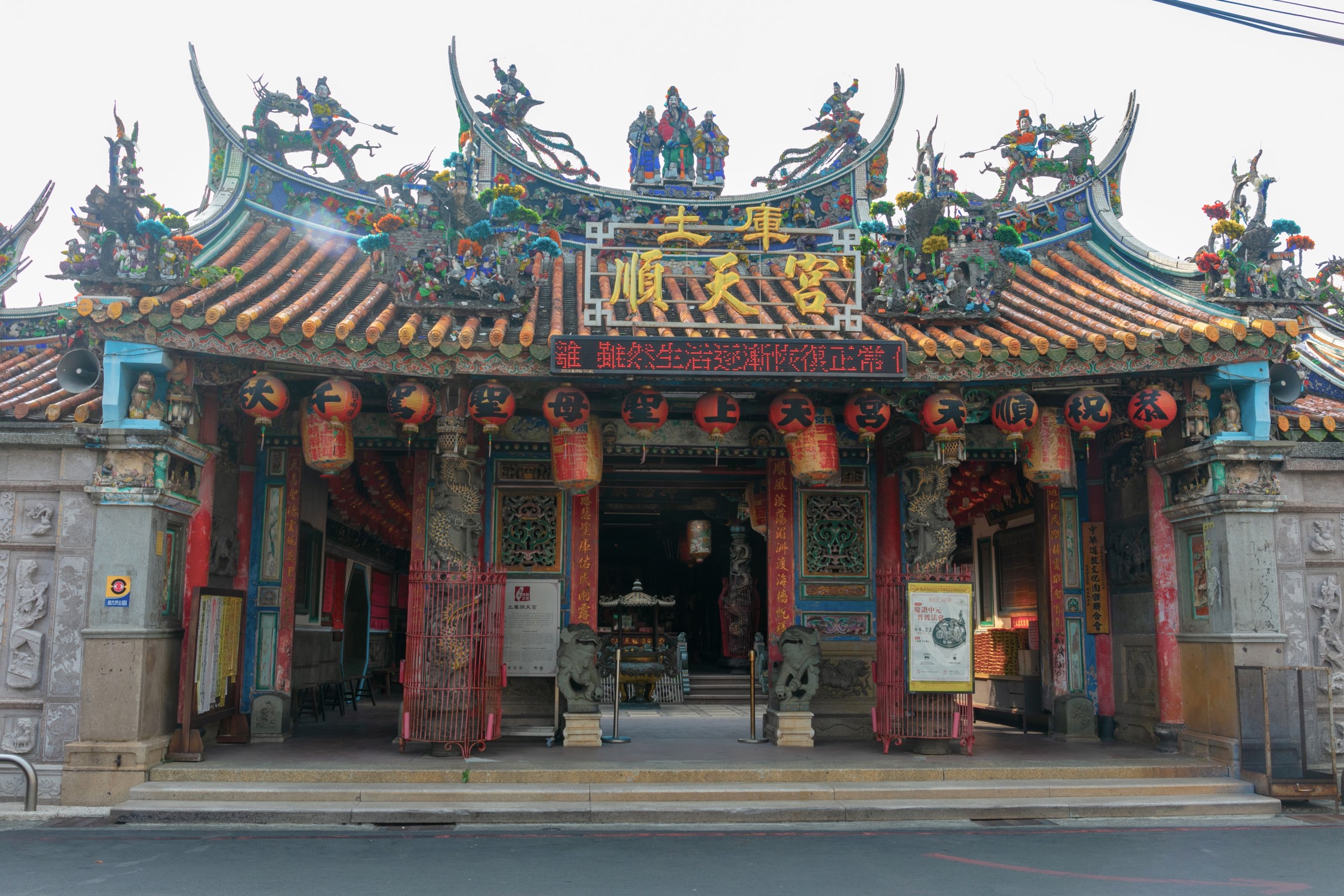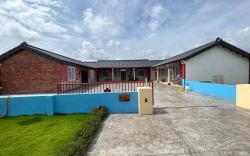Tuku Shun Tian Temple Introduction
Tuku Mazu Yinxuizhuang: Tuku Shuntian Temple is mainly dedicated to Mazu, commonly known as Tuku Ma. The current layout and appearance were established during the Showa era reconstruction, featuring works by Zhang faction's Hu Xian and Quanzhou Xidi faction's Wang Jinmu, as well as artisans Jiang Jiu, Jiang Quanhe, and Chen Tianqi. Introduction: Tuku Shuntian Temple initially started as "Tudi Miao" and underwent renovation and reconstruction. Construction of the front hall commenced in the 14th year of the Daoguang era (1834), followed by the rear hall in the sixth year (1840). In the second year of the Xianfeng era (1852), local gentry redid the front hall and built the Jing Sheng Pavilion and the left wing. In the second year of the Guangxu era (1876), funding was raised for the right wing. After over a century, the temple began to show signs of wear, prompting local gentry Yan Dingquan, Lin Yongzhen, Chen Rongshi, Lin Zhaoding, Chen Taixuan, Lin Jin, and Chen Qingquan, along with Japanese official Shinozaki Kiyokichi (the town mayor) to recruit funds for reconstruction during the Japanese occupation (1934), resulting in the grand temple we see today. In 1940, the Japanese government implemented the Japanization policy. Shinozaki Kiyokichi, the director of the temple's renovation, sought to cooperate with Japan's "Kōgi Shingon Sect Taiwan Mission Plan," applying to become the 34th affiliated temple of the plan. Thus, the "Tuku Branch of Tuku Township, Huwei District, Tainan Prefecture" was established as a branch of the Koyasan Daishi Church, and the statue of Guanyin was invited from Yoshikō-ji in Gunma Prefecture to be enshrined in the main hall, while the other deities retreated to the rear hall. This cooperation spared the temple from damage by the Japanese government until the Heavenly Empress returned to the main hall for worship in 1945, while Guanyin moved to the rear hall. Architectural Features: Tuku Shuntian Temple is located in Tuku City and represents a typical Southern Chinese temple architecture with a swallowtail roof, showcasing impressive "Dragon and Phoenix Presenting Three Stars" cutouts. The main hall features three sections, complemented by dragon and tiger gates on both sides, giving it five gates when viewed from the front, a privilege granted to imperial empresses. The building materials used in the temple, such as the ridge, beams, arches, columns, rafters, and eaves, are made of honey locust wood and were structured through exceptional architectural skills and carving techniques, belonging to the Qing dynasty architectural style. The temple's layout includes three sections, a central courtyard, the main hall, the rear hall (Guanyin Hall), the San Guan Da Di Hall, and the Wen Chang Di Jun Hall, all interconnected by corridors and a Bagua gate. Image Source: Xue Yingqi/Photography. (Authorized photos are not to be reproduced.)
 Tuku Shun Tian Temple
Tuku Shun Tian Temple

































